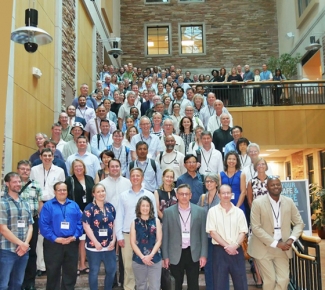The Earth Prediction Innovation Center, or “EPIC,” will advance Earth system modeling skills, reclaim and maintain international leadership in Earth system prediction, and improve the transition of research to operations (R2O) and operations to research (O2R) within NOAA by working closely with partners across the weather enterprise.
EPIC’s legislative language is included as an amendment to the Weather Research and Forecasting Innovation Act (WRFIA) of 2017 (Public Law 115-25) in the National Integrated Drought Information System Reauthorization (NIDISRA) of 2018 (Public Law 115-423). The law states that EPIC will “accelerate community-developed scientific and technological enhancements into the operational applications for numerical weather prediction (NWP).” To achieve this goal, EPIC will
- leverage available NOAA resources and the weather enterprise to improve NWP;
- enable scientists and engineers to effectively collaborate;
- strengthen NOAA’s ability to perform research that advances weather forecasting skills;
- develop a community model that is accessible by the public, computationally flexible, and utilizes innovative computing strategies and methods for hosting or managing all or part of the system;
- and is located outside of secure NOAA systems.
EPIC builds on the Next-Generation Global Prediction System (NGGPS), which supports the design, development, and implementation of a global prediction system. The NGGPS will address growing service demands and increase the accuracy of weather forecasts out to 30 days. The goal of NGGPS is to expand and accelerate critical weather forecasting R2O by accelerating the development and implementation of current global weather prediction models, improve data assimilation techniques, and improve software architecture and system engineering.
A critical component of the EPIC is to support a community developed, coupled Earth modeling system, known as the Unified Forecast System (UFS). EPIC will be the interface between the community (both internal and external) and aid in the advancement of scientific innovations to the UFS and facilitate improvements in the R2O process by providing access to NOAA’s operational modeling code for co-development outside of the NOAA firewall. EPIC will enhance the research and development process by providing access to the UFS using a cloud-based infrastructure for development. EPIC will allow community members to conduct research and development through multiple architectures, whether they are cloud-based environments or traditional high-performance computing environments.
EPIC is managed in the Office of Weather and Air Quality (OWAQ) within NOAA’s Oceanic and Atmospheric Research (OAR) Line Office. An EPIC Vision Paper was released that outlines seven core investment areas, including software engineering, software infrastructure, user support services, cloud-based high-performance computing, scientific innovation, management and planning, and external engagement. NOAA also signed a Memorandum of Agreement (MoA) with the National Center for Atmospheric Research (NCAR) to support infrastructure development for a UFS community model.
The EPIC Community Workshop, hosted by OWAQ and held 6-8 August 2019, was attended by over 180 members of the community. The workshop provided an opportunity for members of the weather enterprise to participate in EPIC’s strategic direction, especially sharing ideas about potential business models, governance structures, priority areas of funding, and how to initiate EPIC. Community members recommended that EPIC be located external to NOAA and exist in a physical location. Community members agreed that the highest priority funding areas are user support services, computing resources, and software engineering. Community members also developed EPIC mission and vision statements, which are below:
Community-developed Mission: Advance Earth system modeling skill, reclaim and maintain international leadership in Earth system prediction and its science, and improve the transition of research into operations.
Community-developed Vision: Create the world’s best community modeling system, of which a subset of components will create the world’s best operational forecast model.
As EPIC progresses, the program is dedicated to fostering a collaborative community environment; providing transparent and frequent program updates; and being responsive to the needs of the community.
For Further Reading:
Legislative Language
The Unified Forecast System
Next-Generation Global Prediction System (NGGPS)
Earth Prediction Innovation Center (EPIC)
* View the NOAA-NCAR MoA, EPIC Vision Paper, and EPIC Community Workshop Strategy, Summary and Recommendations PowerPoint on the EPIC Webpage. Check back frequently for program updates, additional materials, and ways to get involved.
EPIC Community Workshop Article
For Questions Please Contact:
DaNa Carlis, PhD, PMP–OWAQ Program Manager for EPIC and NGGPS, dana.carlis@noaa.gov
Krishna Kumar, PhD–OWAQ Program Coordinator for EPIC, krishna.kumar@noaa.gov
Leah Dubots–OWAQ Pathways Intern supporting EPIC, leah.dubots@noaa.gov
